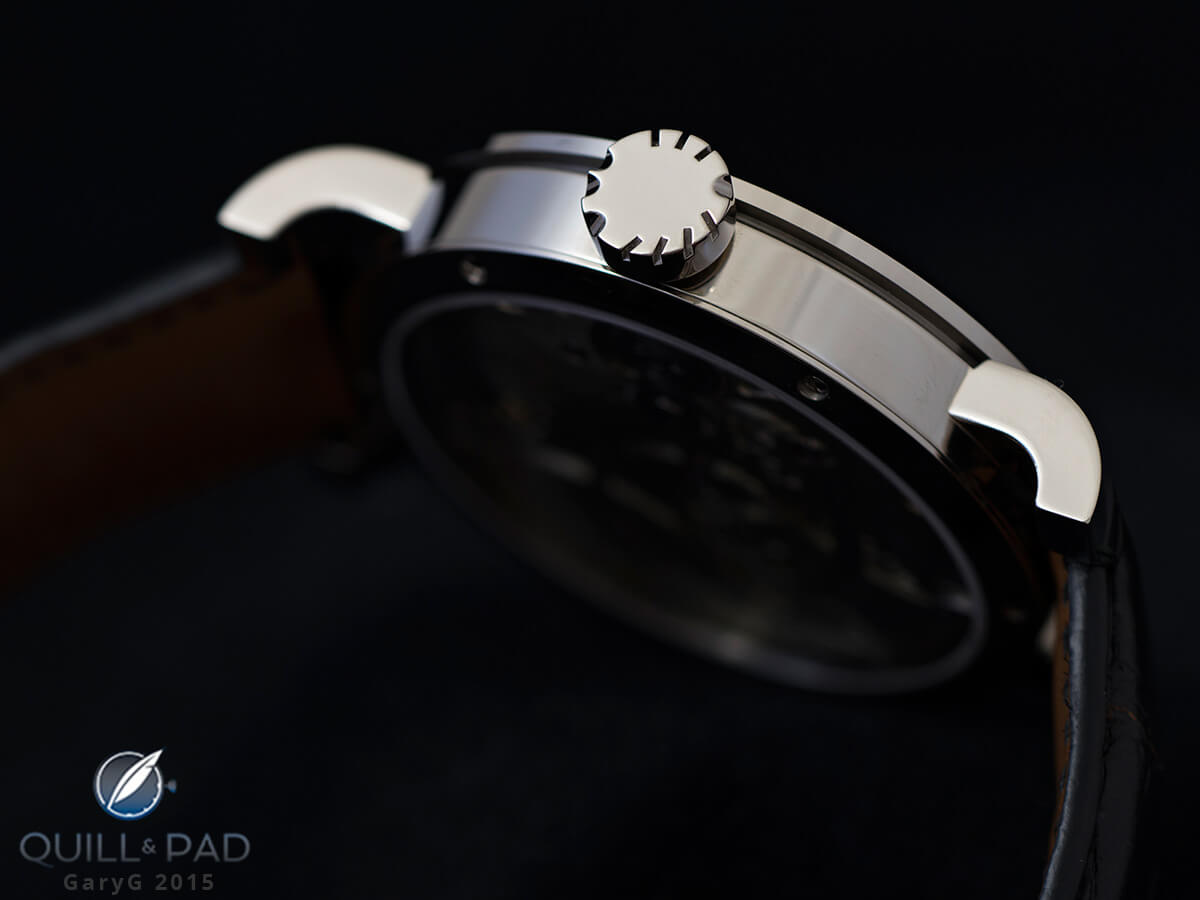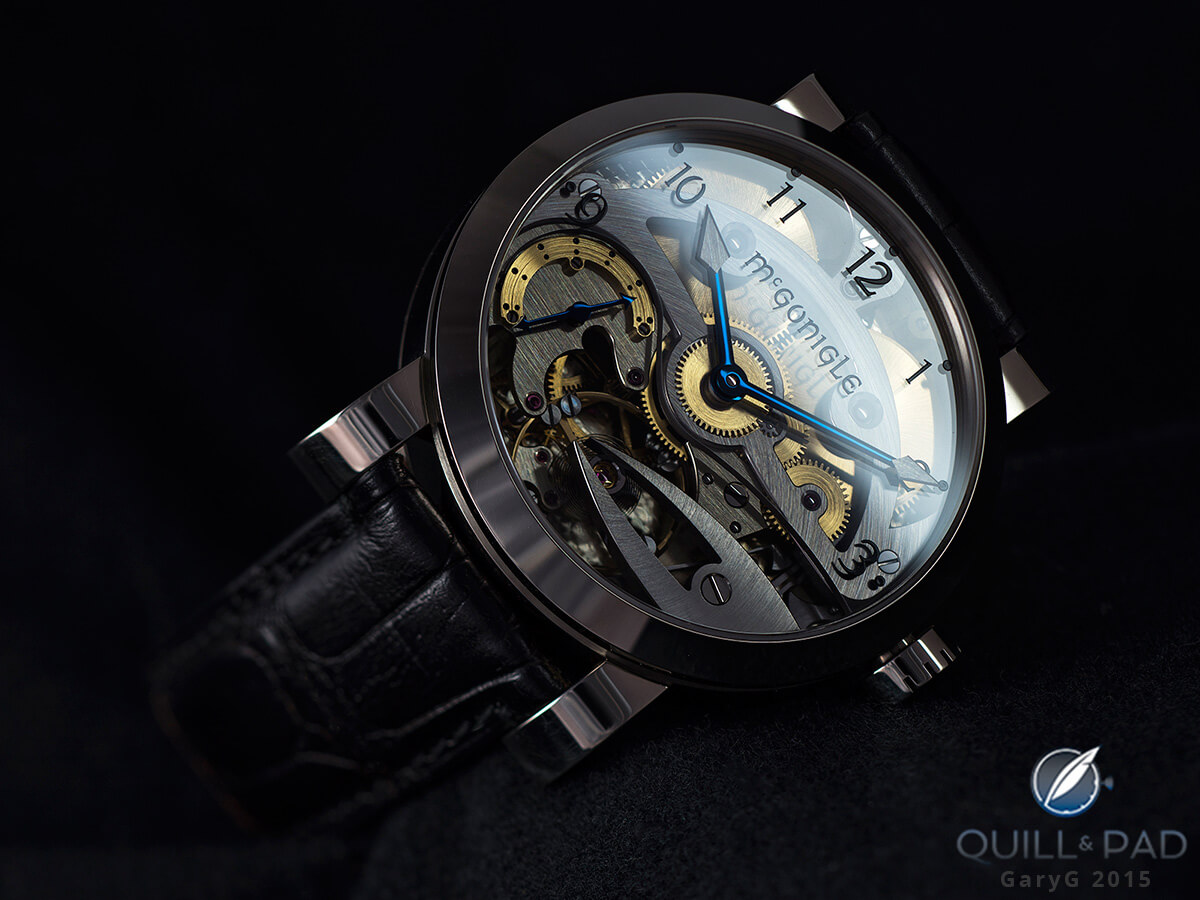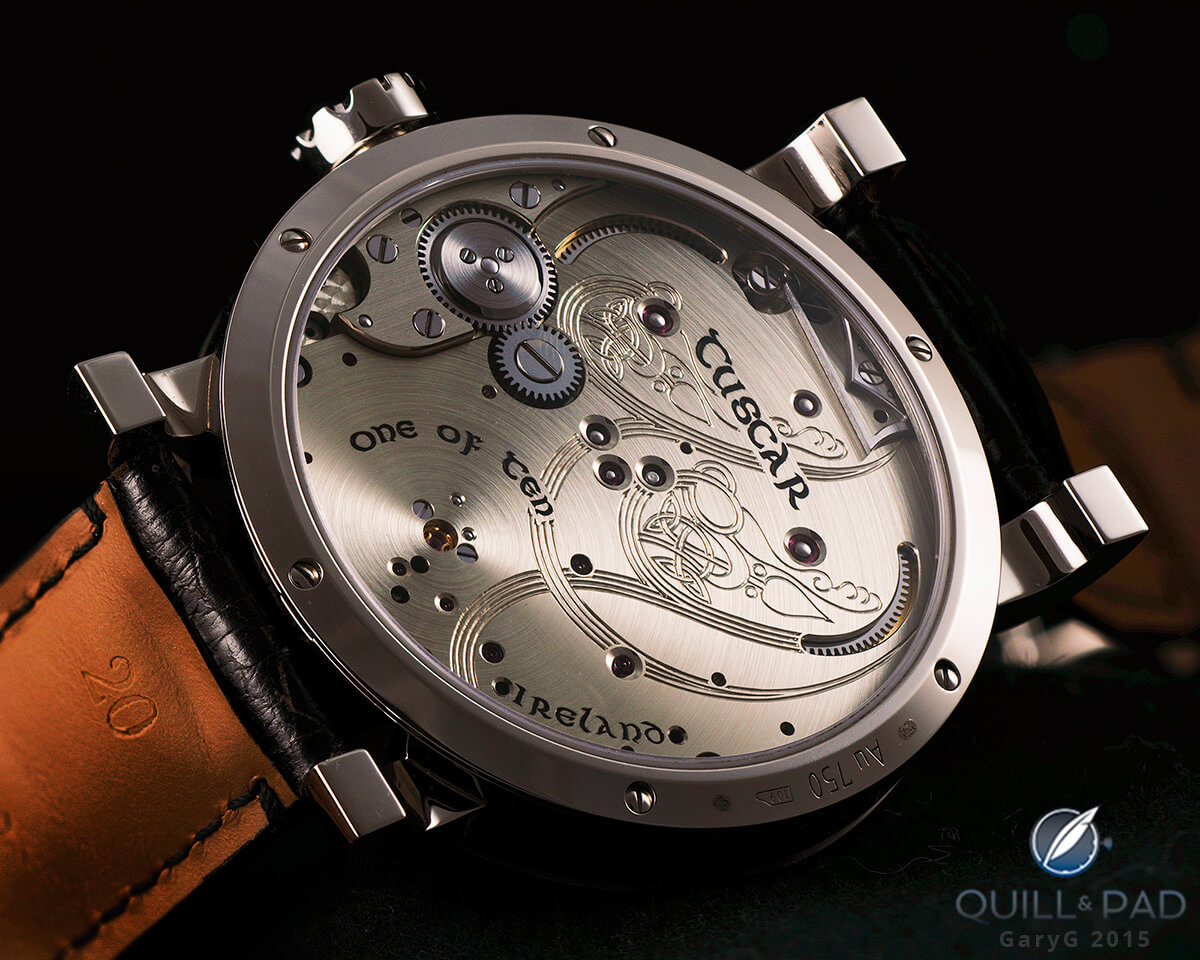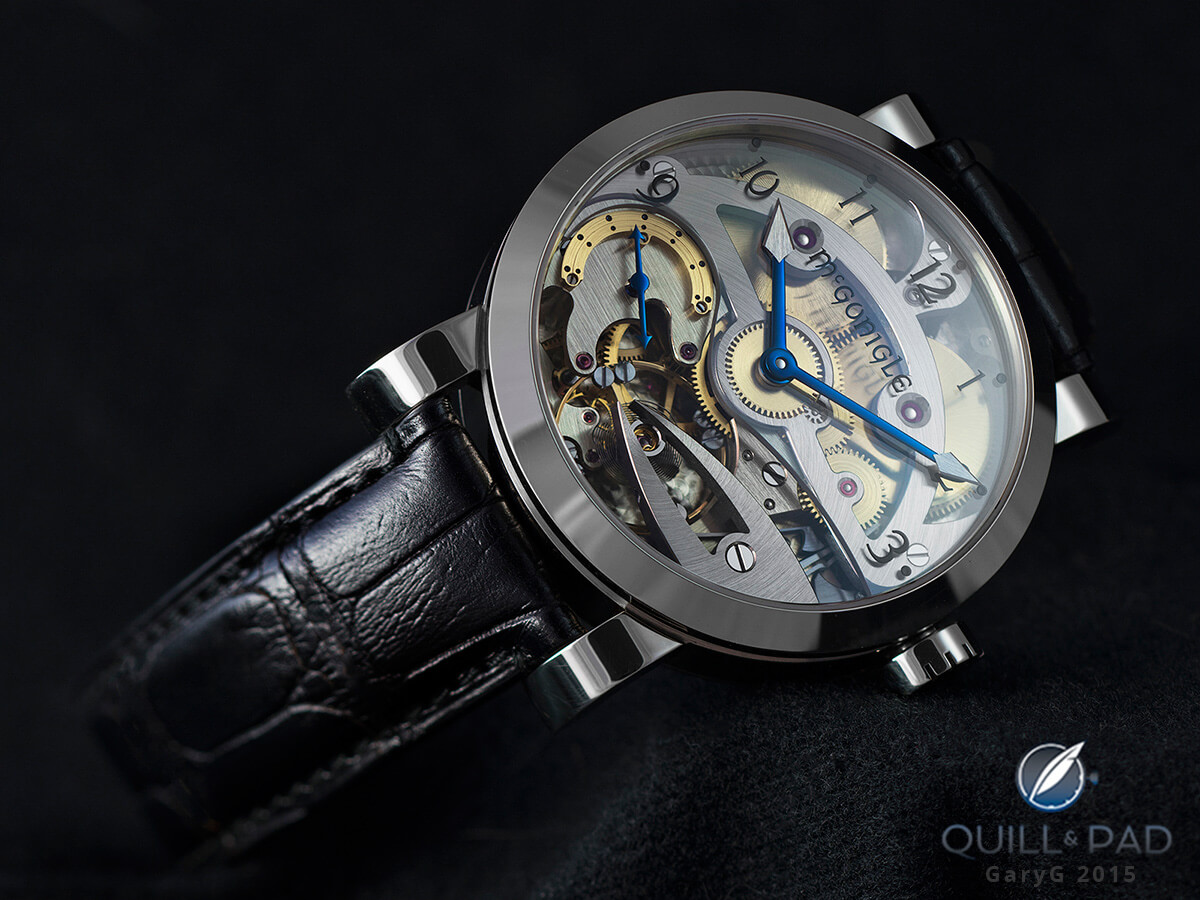Behind The Lens: McGonigle Tuscar One Of Ten – Reprise
by GaryG
For those of you who are regular readers of my “Behind the Lens” series, it’s no secret that my watch pals and I are big fans of independent watchmaking.
Here at Quill & Pad we’re also fans of the independents, prominently including Irish watchmaking brothers John and Stephen McGonigle.
Recently, I had the opportunity to photograph an example of the Tuscar One of Ten owned by a good friend. Let’s take a look at some of the results.
Taking a look at the McGonigle Tuscar One Of Ten: front, back, and around
This particular watch is one of a series of ten “subscription” pieces made by the McGonigles and sold to patrons who paid part of the price in advance in order to provide working capital for the effort. As you can see in the image above, the One of Ten watches are characterized by their transparency. Unlike the later Banu series, whose watches feature a smoky sapphire crystal plate between 3 and 9 o’clock, these watches feature a clear sapphire sub-plate bearing the numerals and brand name.
Usually, a photo of the rear of a watch would say “movement side.” in the case of the Tuscar, that’s not really appropriate as the key movement elements here are deliciously visible from the front of the watch.
As you can see, the German silver plate and bridge on this side of the watch provide a subtle, but pleasing, visual contrast to the white gold case. The Irish-themed engraving and concentric graining catch the light and draw our eyes into a pleasant dance around the enclosed space.
In this shot, I’ve tried to showcase some of the finishing choices that make this watch so interesting to look at. Circular graining adorns many of the key elements, including the “tweezers” that hold the balance wheel, but we also see straight graining on the small bridge under the second hand and on the tips of the hour and minute hands. There is also some striking snailing on the two spring barrels.
Returning to the rear, we can see some of the attractive finishing details of the Tuscar a little more clearly, including the brilliantly polished countersinks for the jewels, the well-finished screws, and the crisp, deep engraving that includes the special “One of Ten” designation.
Other parts of the watch have lovely detailing as well, including the wonderfully-shaped crown with its notches and grooves representing characters from the medieval Ogham alphabet and the deep-cut McGonigle logo on the buckle.
Before moving on, let’s zoom in for a moment and appreciate the finishing quality of the Tuscar, including the precise beveling we see on the edges of the plates and bridges and the well-shaped and beautifully blued hands.
Shooting the McGonigle Tuscar One Of Ten
As an amateur photographer, the great majority of my learning process so far has been directed toward the effective use of light. What I’ve learned is that properly directed light can be your best friend when you want to highlight certain features of a watch or create a certain mood. At the same time, watches and lighting can at times be a diabolical combination as unwanted reflections abound and a seeming inability to throw light where you want it is, for me at least, a frequent affliction.
If you are interested in this topic, feel free to scroll back up and take a look at the images shown so far in this article; in each case, the placement and intensity of the lighting was intended to do something specific, from throwing shadows to illuminating certain features to allowing the viewer to see what the actual watch looks like under natural lighting conditions.
As an example of the importance of light, here are two shots of the front of the Tuscar, nearly identical except for the lighting employed.
The first image is quite literal: if you took a Tuscar and held it under a neutral light source, this is pretty much what you’d see. The second shot is quite obviously intended to create a different effect though the use of contrast. It also highlights the McGonigle logo on the face and the blue hands.
Here’s another shot of the reverse, this time lighted to draw our attention to the “Tuscar” name and to provide some dimensionality to what, under flattering lighting, can appear to be a much simpler landscape than it actually is.
The Tuscar One of Ten is an interesting watch to photograph, but also quite challenging in the sense that it’s not that easy to make the McGonigle logo legible, and all too easy to get the wrong incident angle of light resulting either in a “blah” look or hot spots of reflected light. One way of getting around these problems, and of having some fun to boot, is to try different angles and watch positions.
To me, one of the neatest things about the Tuscar is that each new angle of view reveals additional, thoughtful details. In the image immediately above, for instance, the thickness of the tweezer-shaped balance cock and the clever two-diameter half-dial displaying the seconds are evident – as are the large polished sinks for the spring barrel jewels.
McGonigle Tuscar One Of Ten: parting shots
Well, as usual all good things, including loans of watches from one’s friends, must eventually end. After a few last shots, I bundled the Tuscar back up and returned it to my pal. Now I’m trying to figure out which beautiful piece to beg for next!
For more on the McGonigle Tuscar and the true meaning of independence in watchmaking as personified by the McGonigles, see Interconnectivity And Independence: The McGonigle Tuscar and www.mcgonigle.ie/tuscar.
Quick Facts McGonigle Tuscar One Of Ten
Case: 43 mm, 18-karat white gold
Movement: manual winding Caliber McG01
Functions: hours, minutes, two-sided subdial for seconds
Price: 52,800 Swiss francs
* This article was first published on April 24, 2015 at at Behind The Lens: McGonigle Tuscar One Of Ten.
You may also enjoy:
Interconnectivity And Independence: The McGonigle Tuscar
Behind The Lens: The Philippe Dufour Simplicity
Behind The Lens: Kari Voutilainen Masterpiece Chronograph II In Platinum


















Leave a Reply
Want to join the discussion?Feel free to contribute!